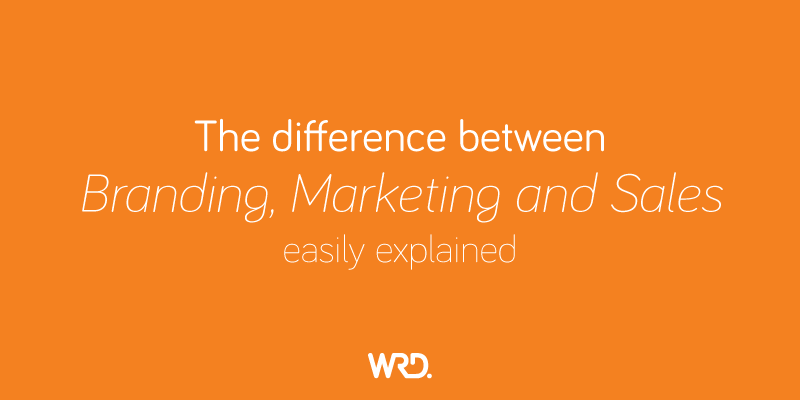We have all heard of the 6 ‘P’s’ of marketing – but as my name starts with a ‘D’, I thought that I’d give this blog post a twist in direction, and focus on my 9 ‘D’s’ of marketing.
1. Define your market
It is essential to define your target market. Once you know who you are talking to, you can figure out how to get in front of them. I recently met with a client who was putting together a brochure to promote their services. During the conversation we identified that they had two target markets – their clients and the volunteers that help them deliver their services. Delving deeper we discovered that the turnover of volunteers was very high and when areas have a crisis, volunteers move their support. This has a large impact on the organisation and how they operate, so having a brochure specific to gaining in volunteers was deemed critical. When we defined the ‘persona’ of the volunteers, we looked at ‘who are they?’, ‘what do they do in their spare time?’, ‘where will we find them?’ and ‘what is in it for them?’
2. Desired outcome
Now that you know who you are talking to, you need to decide what result you would like to achieve through your marketing. Do you have a revenue generating goal? Are you after a set number of new clients? Do you want to sell a particular number of products or service packages? Knowing what your desired outcome is means that you can plan your marketing around that.
3. Diversify your strategy
Having a good marketing mix is essential to delivering a higher return on investment (ROI). A good mix of digital and print is always prudent. It is very tempting to only focus on online marketing as it is cheap and can be delivered in seconds to hundreds, if not thousands of potential customers. But just as quickly as it arrives, it can be deleted (EDM), missed by being too far down a feed (social media) or skimmed and forgotten (blog posts). Print has been proven to have a longer life span than digital. The down side is that it’s expensive. So, you need to plan your budget carefully and allocate funds accordingly.
4. Dollars and sense
Your next task is to set a budget. Be realistic here. If you are a business that sells $2 widgets, then the cost of procuring a client needs to be far less than a real estate agent selling $1000,000 homes. What I mean is, if you’re only making $2 per product there is no point in getting presentation folders produced that may cost $5 each. Rather go for more cost effective online marketing or if print works for you then choose a smaller flyer design that still looks good, but is printed on cheaper stock. Remember that larger print runs will result in a cheaper cost per flyer which will keep your costs down and allow you to really saturate your market. Like wise, if you are selling $1000,000 homes, then to spend $5 or even $50 promoting your service to get a client in, will be worth it.
5. Deal
When marketing, you need to be very clear as to what you are offering. Having a targeted campaign will be far more effective than jumping all over the place – in print you’re promoting one thing, but online you’re promoting something entirely different. In your marketing plan you should have identified the different promotional seasons for your business and have a game plan as to what to promote and when. For example in retail you might focus on key shopping spend trends, such as Christmas, Mother’s Day or Valentine’s Day. If you are in the service industry, the end of financial year might be your drawcard. Keep your deal/offer simple and clear (eg; 2 for 1) rather than something complicated such as buy 2 and get the 3rd for half price. Very wordy and confusing!
6. Design
Now that you know what you are doing and who you are marketing to, you really do need to invest in getting professional design. I say ‘invest’ as this is the one area that business owners think that they can cut corners on, but it really is the most important. A good designer will know how to create collateral that will best present your message to your market while ensuring that your brand integrity is maintained across all the media platforms. The money that you spend on design will yield a much better result for your marketing, giving you far more ‘bang for your buck’. There is the saying, “if you pay peanuts, you will get monkeys”, the same goes, that if you look cheap and nasty, the consumer will slap you with a cheap and nasty brand.
7. Distribute
Going back to my example of the company targeting volunteers, the distribution of their material becomes critical. As they are primarily focusing on retired men, it is essential to know where to distribute their marketing mix. Stats show us that the current 60+ year old male is not very active on social media. They do however read the newspaper (printed version), play golf and lawn bowls and do chores around the house (usually demanded by the wife who is sick of having them hanging around)! So, adverts in the local paper, flyers or posters at the golf or bowling club along with a presence in a place like Bunnings would be a good start. If you were targeting women aged 35-45, social media would be your gold mine as this demographic is the most active user of social media.
8. Deliver
The most important aspect of marketing is ensuring the you are delivering your message consistently. You should have a monthly plan of what activities you plan to do on a regular basis to ensure that you are in front of your clients and are hopefully front of mind. Do not fall into the trap of stopping your marketing when you are busy and then frantically trying to get your message to your audience when things are quiet and slow. Consistency is king – both in marketing and branding, so ensure that you have a plan, no matter how simple, something is always better than nothing.
9. Deb’s Rule
Anyone that has worked with the team at WRD, would have heard me talk about ‘test and measure’. It’s vital for you to monitor how well your marketing is working for you. Always ask how people heard about you and keep this on record. It will let you know if you should continue down a particular path or if you should change your marketing direction. This is relevant both for where you are placing your marketing as well as what offer you are promoting. If a strategy is not working, then you need to know so that you can change it. Marketing is not a sit and forget part of your business. It needs to constantly evolve and adapt and to reap the rewards, you need to keep on top of it.
If you need any assistance with your marketing or strategic design, give our professionally trained team a call on 1800 403 680 or flick us an email and we will get right back to you.



